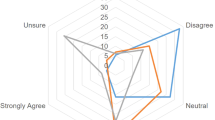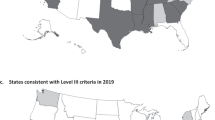Abstract
Objective:
To examine how neonatologists determine which risks require inclusion for informed consent per the ‘Common Rule’ and ‘Draft Guidance’ regulations in comparative effectiveness research (CER).
Study design:
Neonatologists active in research were invited to complete an online survey. Questions focused on clinical practices for treating hyperbilirubinemia in premature infants and about risk disclosure related to a hypothetical randomized trial.
Results:
Response rate was 57%. 43% were primarily researchers; 31% primarily clinicians. 69% had conducted CER. 81% thought hypothetical study enrollment was not riskier than receiving routine care. 76% labeled the study ‘minimal risk’ by comparing study risks to clinical care risks. Respondents would not currently disclose many of the treatment risks but would disclose more if the Draft Guidance were enacted into law.
Conclusion:
Findings suggest the Draft Guidance requires disclosure of more risks than does the Common Rule; applying either rule results in disclosure of more risks than in standard clinical care.
This is a preview of subscription content, access via your institution
Access options
Subscribe to this journal
Receive 12 print issues and online access
$259.00 per year
only $21.58 per issue
Buy this article
- Purchase on Springer Link
- Instant access to full article PDF
Prices may be subject to local taxes which are calculated during checkout


Similar content being viewed by others
References
Macklin R, Shepherd L, Dreger A, Asch A, Baylis F, Brody H et al. The OHRP and SUPPORT—another view. N Engl J Med 2013; 369: e3.
Wilfond BS, Magnus D, Antommaria AH, Appelbaum P, Aschner J, Barrington KJ et al. The OHRP and SUPPORT. N Engl J Med 2013; 368: e36.
Department of Health and Human Services. Draft guidance on disclosing reasonably foreseeable risks in research evaluating standards of care. Federal Register 2014; 79 (206): 63629–63634.
Protection of Human Subjects, 45 C.F.R. § 46.111(a)(2) (2009). Available at http://www.hhs.gov/ohrp/regulations-and-policy/regulations/45-cfr-46/index.html Accessed on 2 June 2016.
Maisels MJ, Watchko JF, Bhutani VK, Stevenson DK . An approach to the management of hyperbilirubinemia in the preterm infant less than 35 weeks of gestation. J Perinatol 2012; 32 (9): 660–664.
National Institute for Health and Clinical Excellence. Neonatal Jaundice. National Institute for Health and Clinical Excellence, 2010. Available at www.nice.org.uk/CG98. Accessed on 20 January 2015.
Magnus D, Wilfond BS . Research on medical practices and the ethics of disclosure. Pediatrics 2015; 135 (2): 208–210.
Joffe S, Wertheimer A . Determining minimal risk for comparative effectiveness research. IRB 2014; 36 (3): 16–18.
Cho MK, Magnus D, Constantine M, Lee SS, Kelley M, Alessi S et al. Attitudes toward risk and informed consent for research on medical practices: a cross-sectional survey. Ann Intern Med 2015; 162 (10): 690–696.
Whicher D, Kass N, Faden R . Stakeholders’ views of alternatives to prospective Informed Consent for Minimal-Risk Pragmatic Comparative Effectiveness Trials. J Law Med Ethics 2015; 43 (2): 397–409.
Acknowledgements
We thank the neonatology researchers for their time in sharing their views with us. We thank NorthShore University HealthSystem Evanston Hospital for providing financial support for Dr Feltman’s subscription to the online survey tool used for this study. The funder had no direct role in the design and conduct of the study; collection, management, analysis and interpretation of the data; preparation, review, or approval of the manuscript; or the decision to submit the manuscript for publication.
Author information
Authors and Affiliations
Corresponding author
Ethics declarations
Competing interests
Dr. Lantos receives royalties on five books he has written about bioethics. He receives occasional honoraria for lectures, including lectures about research ethics. Dr Feltman currently serves on her center’s Institutional Review Board, although did not at the time of data collection.
Additional information
Supplementary Information accompanies the paper on the Journal of Perinatology website .
Supplementary information
Rights and permissions
About this article
Cite this article
Feltman, D., Lantos, J. Neonatologists’ opinions about the ‘foreseeable risks’ in comparative effectiveness research: Results from an online survey. J Perinatol 37, 311–314 (2017). https://doi.org/10.1038/jp.2016.228
Received:
Revised:
Accepted:
Published:
Issue Date:
DOI: https://doi.org/10.1038/jp.2016.228



